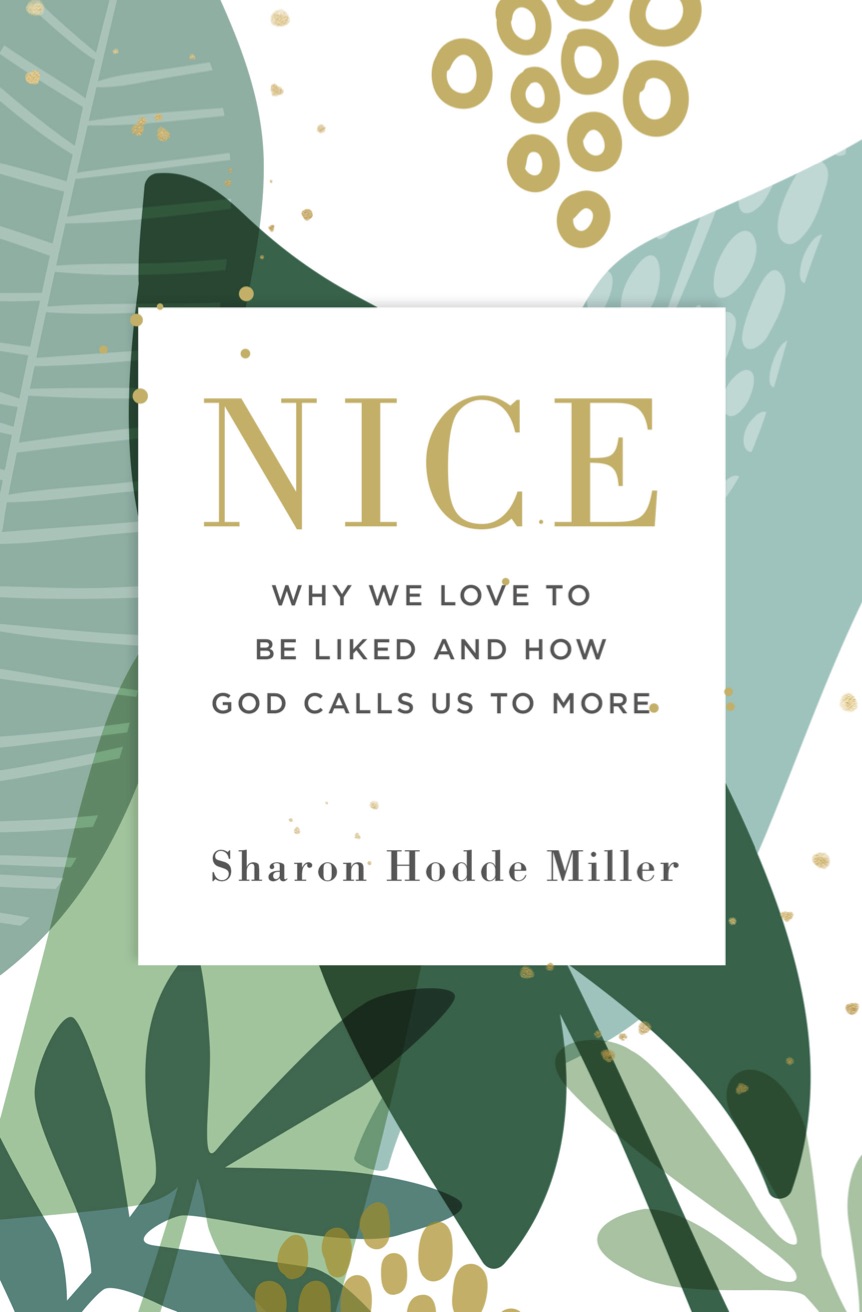I still remember sitting in that tiny room at the OB’s office, waiting to hear the results of my glucose test.
I was at the stage in my pregnancy when I couldn’t get comfortable in any position, and the examining room didn’t help. I was perched high on a stiff bed covered in crumply, white, sanitary paper. I lay down and sat up, lay down and sat up, trying to give my aching sacrum some relief. Diagrams of female anatomy artfully graced the pale, sterile walls around me.
When the nurse finally arrived, she informed me that I had failed my first glucose test. However, she seemed to think the results deserved some embellishment, so she took it upon herself to add,
“It wasn’t even close. You failed it BIG time!”
Clearly the nurse had a terrible bedside manner, but our exchange didn’t end there. I had also gained a lot of weight that month, which became fodder for more comments. Up until that point in my pregnancy I had gained the standard amount of weight, but that month I gained about twice the norm. The nurse was not too concerned, but she did chip in this encouraging piece of advice:
“Just go ahead and throw away all your high school jeans. Your hips will NEVER go back to the way they were. None of your old pants will ever fit again.”
(By the way, I’m guessing she thought I was about 24 years old because I haven’t worn my high school jeans in at least a decade!)
For the record, when you feel as big as a whale it’s not helpful to be told that you’re sustaining irreversible changes to your body. On some level you know this already, but you don’t need anyone spelling it out for you.
At least, that’s how I felt as I sat there on that metal table, in that tiny room.
As I have written here many times before, the bodily changes of pregnancy can be hard. Interactions like the one I just described certainly don’t help, but the media is a far worse offender.
There is a “post-baby body” craze sweeping Hollywood, and it’s all about who can lose their baby weight the fastest. Eight weeks after giving birth, celebrities seem to erase all evidence of their baby bod, which puts a lot of pressure on the rest of us.
I don’t know if the post-baby body phenomenon is about beauty, control, or pride. Maybe it’s a mix of them all. But the fact remains that there are some changes I can’t do anything about. My hips are wider now, having spread apart to make room for my son.
On the one hand, this makes me a little sad for my body. In a real sense, my body will forever bear the marks and scars of bringing life into the world.
On the other hand, I’m in good company.
In just under two weeks, Christians around the world will remember the death and resurrection of our savior, Jesus Christ. On Good Friday, we’ll mourn his crucifixion, and on Easter Sunday, we’ll celebrate his victory over the grave.
What we won’t celebrate is Jesus’ complete physical restoration. Though he was raised from the dead, Jesus still bore the wounds of his execution (John 20).
In a sermon exploring the reason for Christ’s abiding scars, Charles Spurgeon described Jesus’ wounds as both “ornaments” and “trophies.” He explained,
“Beloved, these are to Jesus what they are to us; they are his ornaments, his royal jewels, his fair array. He does not care for the splendor and pomp of kings. The thorny crown is his diadem—a diadem such as no monarch ever wore.”
Christ’s wounds set us free. Because of this, his wounds are like beautiful ornaments. I love that.
Spurgeon goes on to say that Christ’s wounds are also his “trophies”:
“Nor are these only the ornaments of Christ: they are his trophies—the trophies of his love. Have you never seen a soldier with a gash across his forehead or in his cheek? Why every soldier will tell you the wound in battle is no disfigurement—it is his honor. ‘If’ said he, ‘I received a wound when I was retreating, a wound in the back, that were to my disgrace, If I have received a wound in a victory, then it is an honorable thing to be wounded.'”
Not every scar is the result of sacrifice. Some are the result of accidents, and some of victimization.
But, there are some scars we can be proud of, and the stretch marks and scars on our post-baby bodies are certainly among them.
In a lovely reflection on her own post-baby body, one woman describes her stretch marks as “the lines of a story.” When her little boy asked about her “squishy body,” she replied, “These lines tell the story…They tell about how you grew inside me and how I stretched to make room for you because I was so glad you would be my boy. Aren’t they beautiful?”
Yes, they are.
Why do we yearn to erase the evidence of our own beautiful stories? Why do we see our wide hips and stretch marks as failures, rather than ornaments of love, or trophies from our most courageous hours?
Every day my new body reminds me of the good work and sacrifice I did on behalf of my son. Or should I say, it has the potential to remind me, if I choose to see it that way. Rather than strive after the “ideal” post-baby body, I hope I can glory in the “lines” of my own story. Especially since they echo a much greater story, of the one who laid himself down so that I might have life.
Like me, he still wears those trophies of love on his body today.
Sharon
Sharon







You know what, Sharon? I feel the same way about my wrinkles and gray hair. It’s evidence of the life I’ve lived. I’m not some kid, I’m an old guy despite society’s enthrallment with all things youthful.
Thanks for sharing Sharon! I am pregnant with my third and each time my body changes in a different way. What a testimony to how each one of my kids is different and unique in their own way.
BTW, I think that nurse might want to change her area of expertise. Maybe she would do better in an area where the patients are more emotionally stable than pregnant women!!
Haha Mae Lynn, SO true!!
And Tim, that’s a beautiful point! I love the idea of wrinkles and gray hair as signs of a life lived. That has the potential for a whole other conversation about our culture’s resistance to aging.
Love this! So true. The scars/marks of bringing life into the world.
Cynthia Clawson recorded a song a number of years ago entitled “Beautiful Are The Scars.” In the interest of space I won’t quote the text here but I do suggest that it is worth one’s while to Google it and meditate on this very idea that scars can be a powerful representation of how God has worked in our lives and helped us to overcome a painful ordeal.
A number of years ago I had an accident that resulted in a shattered shoulder, among other things, and also left me with a 9 inch scar. I have never felt self conscious about that scar because it reminds me of the incredible way in which God both healed me and launched me into some very rich and rewarding changes in my life.
I know that not all scars have pleasant endings like this, but the God who can redeem all things for His good purposes promises to do just that. Romans 8:28 is no simple platitude.
Just found your blog through your article on the Relevant site. I just love reading your perspective on women’s body issues. What a timely reminder about the wounds of Christ being trophies of His love. Thank you!
(I’ll be back!) 🙂
It’s interesting to consider, that scar tissue is actually thicker and stronger than the surrounding tissue. While unsightly at times, it’s nice to know that as our bodies heal, the healing is one that provides additional strength and support to our physical structure. I’ve always liked to think of my emotional scars in this manner, as well.
Becky, thanks for dropping by!
And Janet, I LOVE that! What a beautiful thought. Thanks for sharing that!
A friend just sent me the link to this post, Sharon, and I so love it. Thank you for taking time to put this into words for others to be blessed by. I have a few story lines, and I’m thankful.